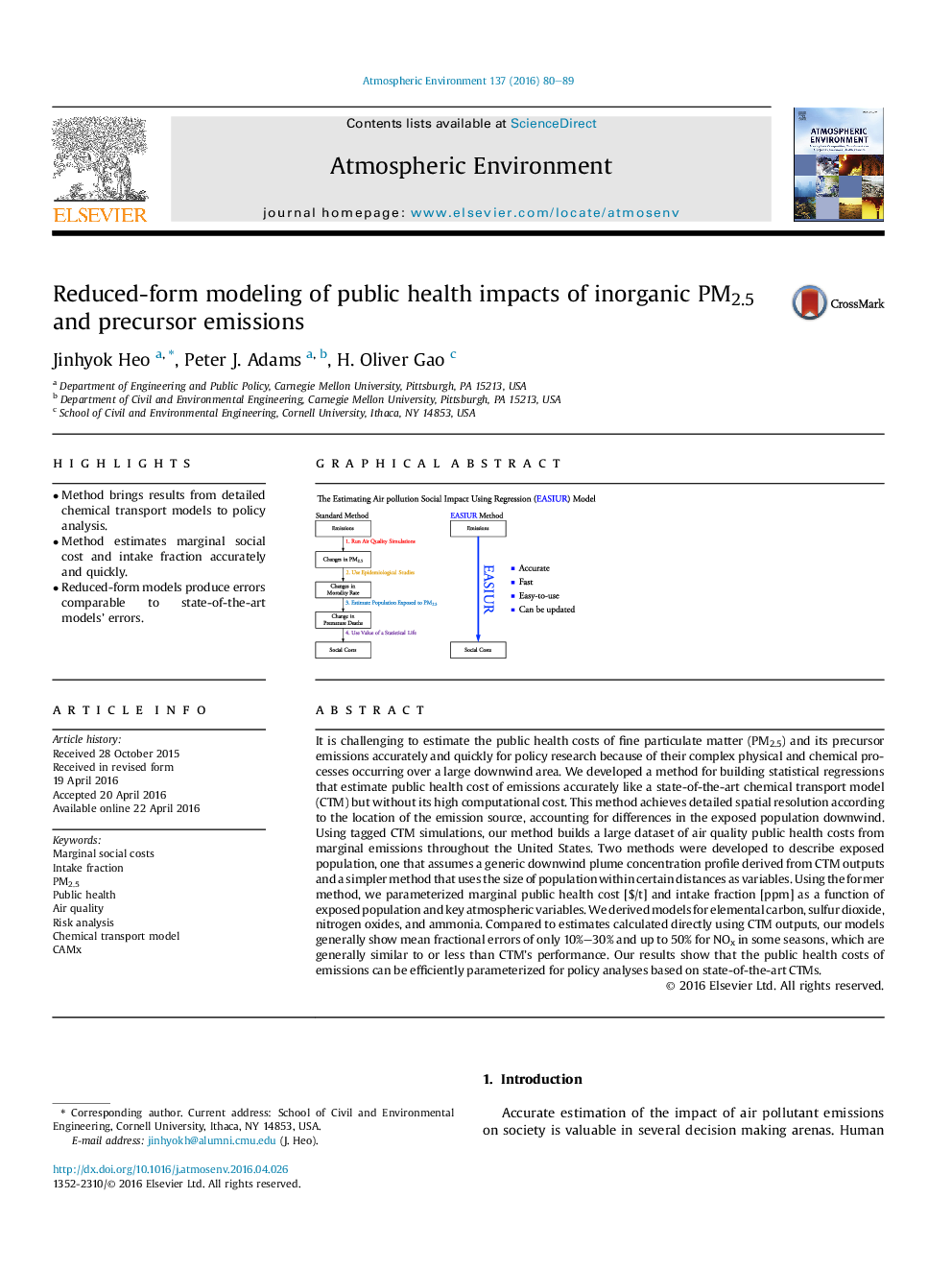| Article ID | Journal | Published Year | Pages | File Type |
|---|---|---|---|---|
| 4438048 | Atmospheric Environment | 2016 | 10 Pages |
•Method brings results from detailed chemical transport models to policy analysis.•Method estimates marginal social cost and intake fraction accurately and quickly.•Reduced-form models produce errors comparable to state-of-the-art models’ errors.
It is challenging to estimate the public health costs of fine particulate matter (PM2.5) and its precursor emissions accurately and quickly for policy research because of their complex physical and chemical processes occurring over a large downwind area. We developed a method for building statistical regressions that estimate public health cost of emissions accurately like a state-of-the-art chemical transport model (CTM) but without its high computational cost. This method achieves detailed spatial resolution according to the location of the emission source, accounting for differences in the exposed population downwind. Using tagged CTM simulations, our method builds a large dataset of air quality public health costs from marginal emissions throughout the United States. Two methods were developed to describe exposed population, one that assumes a generic downwind plume concentration profile derived from CTM outputs and a simpler method that uses the size of population within certain distances as variables. Using the former method, we parameterized marginal public health cost [$/t] and intake fraction [ppm] as a function of exposed population and key atmospheric variables. We derived models for elemental carbon, sulfur dioxide, nitrogen oxides, and ammonia. Compared to estimates calculated directly using CTM outputs, our models generally show mean fractional errors of only 10%–30% and up to 50% for NOx in some seasons, which are generally similar to or less than CTM’s performance. Our results show that the public health costs of emissions can be efficiently parameterized for policy analyses based on state-of-the-art CTMs.
Graphical abstractFigure optionsDownload full-size imageDownload high-quality image (178 K)Download as PowerPoint slide
